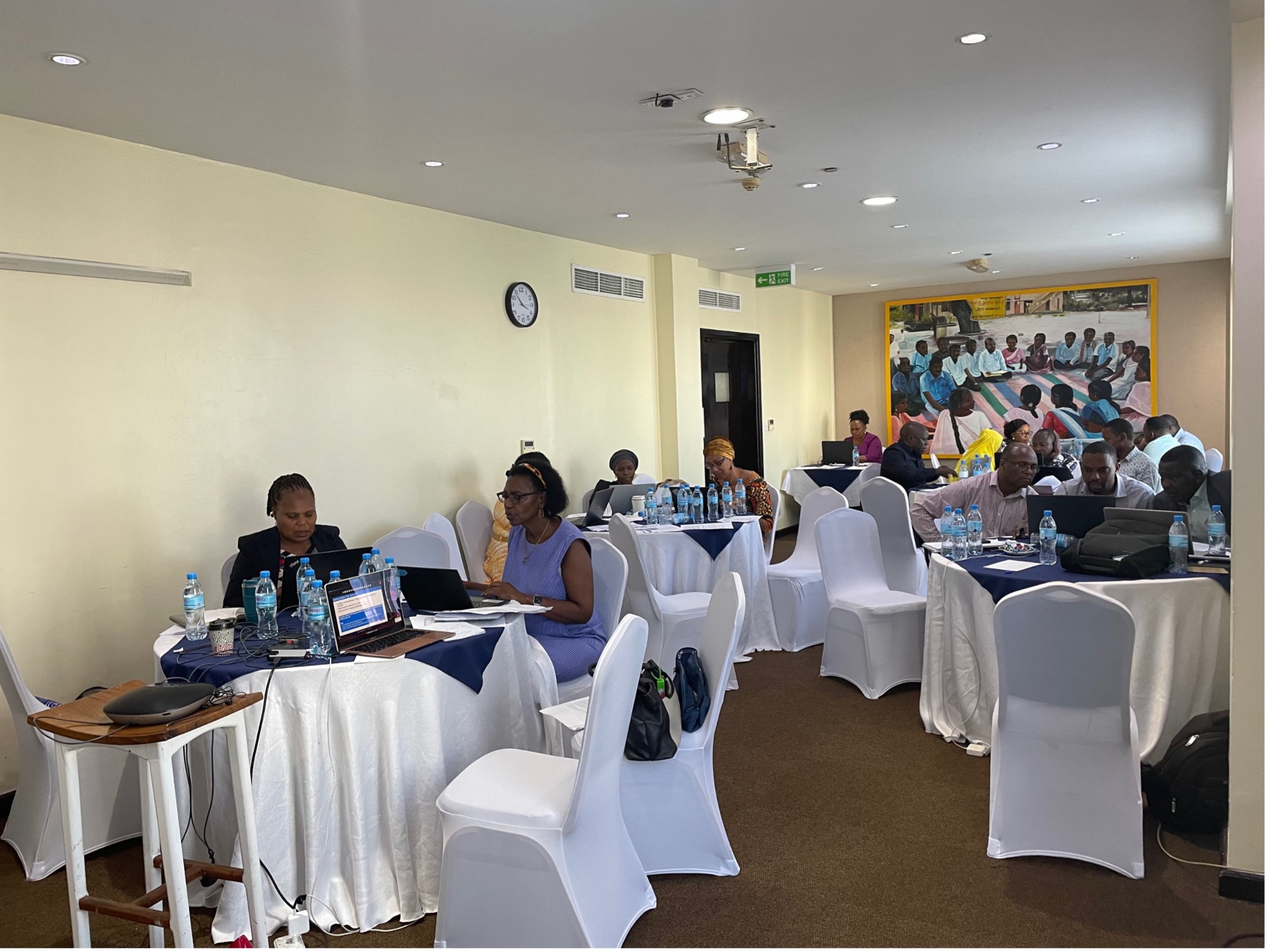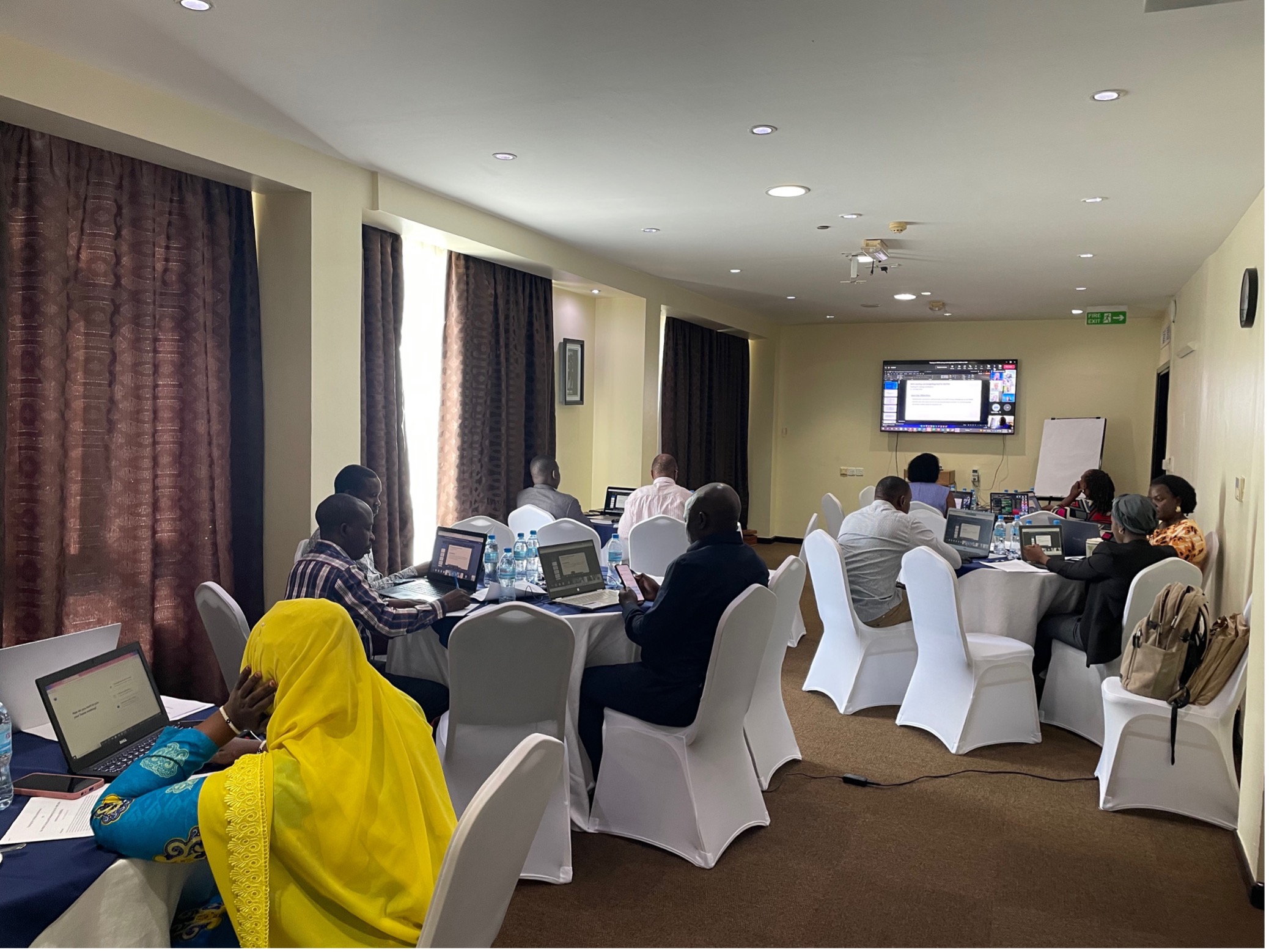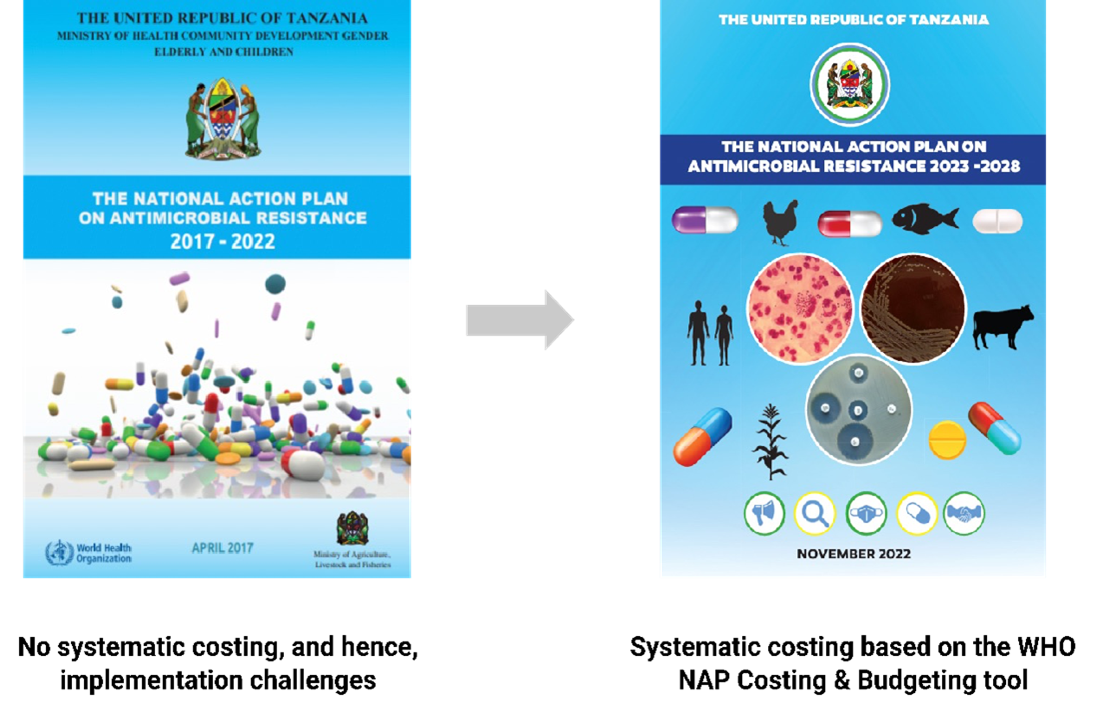Introduction
Antimicrobial resistance (AMR) occurs when microbes (bacteria, viruses, fungi and parasites) evolve in ways that reduce the ability of medicines to fight them. AMR has made many infections, particularly bacterial infections, increasingly difficult or even impossible to treat (1). Without effective medicines, the number of people with severe microbial infections will increase, as will the number of people who die from these infections. In 2019, 4.95 million deaths were associated with AMR, the highest AMR-attributable death rates occurring in western sub-Saharan Africa (2). While AMR is a natural evolutionary process, many aspects of human behaviour have increased the occurrence of AMR. These include misuse and overuse of antimicrobials; lack of awareness and knowledge in the community about AMR; lack of high-quality laboratory diagnostics and reliable data for making decisions; lack of access to clean water and adequate sanitation for people and animals; poor infection prevention and control in health-care facilities and farms; and limited access to high-quality, affordable medicines and vaccines (3).
AMR is a complex problem that requires a multisectoral, multidisciplinary approach. As the causes of AMR are found in many sectors, a One Health approach is required to bring together sectors and stakeholders engaged in human, animal and plant health; food and feed production; and the environment (4). In recognition of the growing public health threat of AMR, the World Health Assembly endorsed the Global Action Plan on AMR (1) and called on countries to develop, implement and monitor national action plans (NAPs) on AMR.
Countries are at different stages of developing and implementing NAPs on AMR (Fig. 1), and very few have implemented all the activities outlined in their plans. Only about 10% of the countries that reported to the 2022 Tripartite AMR Country Self-assessment Survey (5) have made financial provision for AMR NAPs in their national budgets. A key barrier to implementation of the NAPs is costing of priorities (Fig. 1, step 3). Before they implement their AMR NAPs, policy-makers and others who decide on funding must know how much the activities will cost, what is already funded and how additional funding can be raised to operationalize the plan. To support countries in costing their NAPs, WHO developed a costing and budgeting tool for NAPs on AMR (6). The tool is based on a modular approach, which allows ministries to cost the components of the NAP that are relevant to their sector independently. The tool then allows consolidation of the modules into a single, fully costed AMR NAP. The tool allows countries to implement their NAPs by costing priorities. Therefore, a prerequisite for use of the costing tool is definition of priorities and a time-bound operational plan.

Context in the United Republic of Tanzania
The Government, recognizing the grave threat that AMR poses to humans, animals and the environment, developed its first NAP on AMR for 2017–2022 (NAP 1.0), by collaboration among the ministries of Health, Livestock and Fisheries, and Agriculture, with the One Health approach. The country made remarkable progress in implementing the interventions and activities in NAP 1.0 in national and zonal hospitals, regional referral hospitals and central and zonal veterinary centres. The milestones are illustrated in Fig. 2.

Fig. 2. Milestones in implementation of NAP 1.0 (2017–2022)
The second NAP on AMR 2023–2028 (NAP 2.0) (7) was developed by consultation among relevant AMR stakeholders and sectors. The WHO implementation handbook for sustainable implementation of national action plans on AMR: guidance for the human health sector (8) was used for technical guidance and an approach to updating the plan. A situational analysis and an assessment of implementation of NAP 1.0 were conducted, and a number of priorities in the assessment were included for consideration in developing NAP 2.0, including extending implementation to subnational levels, strengthening engagement of the private sector, operationalization of digital monitoring systems with District Health Information software 2, strengthening achievements in human health and establishing tangible actions in the plant, animal and environment sectors (7).
The national AMR Multisectoral Coordinating Committee (MCC), experts from technical working groups (i.e. awareness, effective communication and education; surveillance and research; sanitation, hygiene and infection prevention and control; antimicrobial stewardship) and other stakeholders prepared a list of activities and sub-activities for each strategic objective, in line with the Global Action Plan on AMR. A series of meetings was held to review strategic and operational plans and the monitoring and evaluation framework. Participants in development of NAP 2.0 included representatives of ministries, departments and national and international agencies, including the Vice-President’s Office; the Prime Minister’s Office One Health Coordination Section; the ministries of Health, Livestock and Fisheries, and Agriculture; regional and local government authorities; academic and research institutions; regulatory authorities; professional bodies; hospitals and veterinary centres; United Nations agencies (WHO, the Food and Agriculture Organization of the United Nations); the World Organization for Animal Health; development partners and nongovernmental organizations.
The strategic objectives of NAP 2.0 are to:
- strengthen coordination, collaboration and governance of the NAP for AMR implementation;
- raise awareness and understanding of AMR through effective information, education and communication;
- strengthen knowledge and evidence through surveillance and research;
- reduce the incidence of infection by effective sanitation, hygiene, infection prevention and farm biosecurity;
- optimize use of antimicrobial agents in human and animal health; and
- prepare an economic case for sustainable investment with consideration of the needs of countries to increase investment in new medicines, diagnostic tools, vaccines and other interventions.
Costing the NAP on AMR of the United Republic of Tanzania
A 5-year operational plan for implementation of NAP 2.0 was developed in multisectoral workshops led by the MCC and technical working groups. Capacity for use of the WHO costing and budgeting tool for NAPs on AMR (6) was built during consultations between the three levels of WHO (headquarters, the Regional Office for Africa and the WHO Country Office) and the MCC in March–August 2022. Through the multisectoral governance mechanism, 17 costing coordinators (Government officials representing the ministries of Health and of Agriculture, academia and implementing partners) were selected to be trained in use of the tool. Virtual and in-person training was conducted on 3–5 October 2022, which allowed sharing of knowledge on use of the tool and encouraged further refinement of the activities to be costed.


Fig. 3. Costing coordinators during training in the United Republic of Tanzania
After training, the costing coordinators in the four AMR technical working groups set priorities for activities in all sectors and costed them with the tool to generate a costed plan, with input from all relevant implementers, including the ministries of Health, Livestock and Fisheries, and Agriculture, the National Environment Management Council, the National Institute for Medical Research and the secretariat of the AMR MCC. Through the modular approach of the tool, each technical working group costed its operational plan, and the four were aggregated to produce a combined costed plan and dashboard.
The costs for the six NAP 2.0 strategic objectives cover 11 priorities, 34 strategic interventions and 85 activities. The costed plan was reviewed in a multistakeholder workshop before inclusion in NAP 2.0. The total cost of the 5-year operational plan is US$ 26 million, distributed as follows (Fig. 4):
creation of awareness and education: US$ 1.95 million
surveillance, laboratory activities and research: US$ 11.98 million
infection prevention and control: US$ 6.6 million
stewardship: US$ 2.1 million
governance: US$ 1.1 million
development of an investment case and sustainability: US$ 2.6 million

Fig. 4. Percentage distribution of costs for the strategic objectives
The NAP on AMR 2023–2028 has been finalized, costed with the WHO costing and budgeting tool and officially endorsed by the national authorities (Fig. 5).

Fig. 5. NAP 1.0 2017–2022 (costed on an Excel® sheet) and NAP 2.0 2023–2028 (costed with the WHO costing and budgeting tool
“This is our first experience with costing for our national AMR action plan with this tool. We have been using an Excel sheet to cost our NAP AMR as well as other national operational plans. Now, we can integrate these experiences into other national operational plans. The tool is very simple, but also very informative when it comes to using and monitoring the country’s resources to facilitate implementation of AMR and other activities in our country,” commented Emiliana Francis, BPharm, MPHarm, National AMR coordinator, Ministry of Health.
Training in use of the WHO Costing and Budgeting Tool for NAPs on AMR brought together all the relevant ministries, beyond human health, animal health and agriculture, to update the NAP. Training underlined the importance of prioritizing and costing activities to ensure that NAP 2.0 was operationally feasible. A successful operational plan that can be implemented for AMR activities requires the involvement of all sectors, both in setting priorities and in costing. After training, the coordinators formed four groups, each group working in consultation on a time-bound operational plan for prioritized activities.
The costing coordinators reported that the training course had shown them how to cost an operational plan and improved multisectoral collaboration. Calculation of the financing required not only assists in prioritization but is a first step towards better resource mobilization. Ascertainment of the costs of priorities is also useful for a cost–benefit analysis and development of an investment case to policy-makers for investment in AMR and perhaps to increase financing of the national response to AMR.
Costing of NAP 2.0 for the United Republic of Tanzania was supported by the WHO Country Office, the WHO Regional Office for Africa and WHO headquarters. Financial contributions were made by the Federal Ministry of Health, Germany and the governments of Saudi Arabia and the United Kingdom of Great Britain and Northern Ireland (UK Aid/ Fleming Fund).
References:
1. Global Action Plan on Antimicrobial Resistance. Geneva: World Health Organization; 2015 (https://apps.who.int/iris/bitstream/handle/10665/193736/9789241509763_eng.pdf?sequence=1).
2. Murray CJ, Ikuta KS, Sharara F, Swetschinski L, Aguilar GR, Gray A et al. Global burden of bacterial antimicrobial resistance in 2019: a systematic analysis. Lancet. 2022;399(10325):629–55. doi:10.1016/S0140-6736(21)0274-0.
3. Antimicrobial resistance. Fact sheet. Geneva: World Health Organization; 2021 (https://www.who.int/news-room/fact-sheets/detail/antimicrobial-resistance, accessed 23 November 2021).
4. One health. Geneva: World Health Organization; 2023 (https://www.who.int/health-topics/one-health, accessed 1 August 2023).
5. Food and Agricultural Organization, World Organization for Animal Health, World Health Organization. Global database for tracking antimicrobial resistance (AMR). Country self-assessment survey (TrACSS). Geneva: World Health Organization; 2023 (https://amrcountryprogress.org/, accessed 1 August 2023).
6. WHO costing and budgeting tool for national action plans on antimicrobial resistance. Geneva: World Health Organization; 2023 (https://www.who.int/teams/surveillance-prevention-control-AMR/who-amr-costing-and-budgeting-tool).
7. United Republic of Tanzania: Second national action plan on antimicrobial resistance 2023–2028. Geneva: World Health Organization; 2023 (https://www.who.int/publications/m/item/united-republic-of-tanzania-second-national-action-plan-on-antimicrobial-resistance, accessed 1 August 2023).
8. WHO implementation handbook for national action plans on antimicrobial resistance: guidance for the human health sector. Geneva: World Health Organization; 2022 (https://www.who.int/publications/i/item/9789240041981, accessed 9 November 2022).









